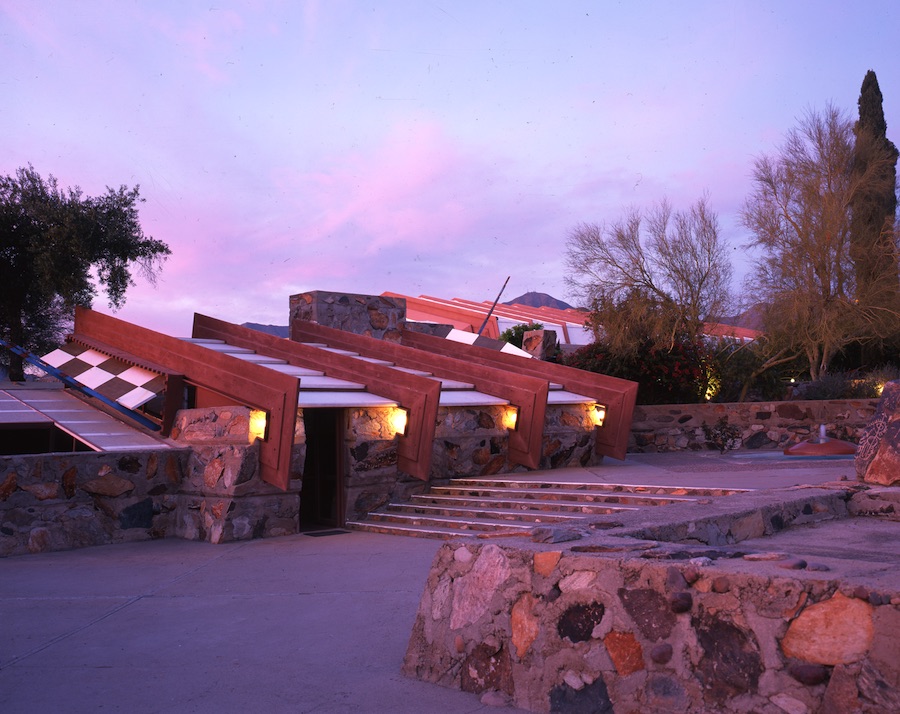
“You can’t be involved in American architecture and not be involved with Frank Lloyd Wright,” insists Aaron Betsky, the new dean of the Frank Lloyd Wright School of Architecture in Scottsdale, Arizona. Founded in 1937, Taliesin West is the bookend to Wright’s 1911 Taliesin residence and campus in Spring Green, Wisconsin. Since arriving last year after eight years as director of the Cincinnati Art Museum, Betsky has been tasked with bolstering the graduate level apprenticeship program while adding a renewed sense of purpose to Wright’s vision. We caught up with him on the Scottsdale campus, where he lives, works and contemplates desert life.
At Taliesin West, you not only live and breathe Frank Lloyd Wright, but also experience his architecture. Yes, you’re so enveloped by the beauty of the site in relationship to its setting. What’s interesting is its possibility, tradition, size and physical location. You don’t just walk into the studio and give a crit. You talk at lunch and dinner, and sometimes continue through the night. If you think about the Arts and Crafts tradition when trying to make ideal communities, this is one of the few remaining places left.
What are your plans for updating the program? I’ve tried to focus the curriculum more on the outside world. One of the things we’re doing is we’re committed to four years of projects in the twin mining towns of Globe and Miami, an hour up in the mountains. They’re troubled communities in beautiful settings. We’re going to work with them to figure out what as architects we can do to contribute.
Why study here? Is it the legacy, or do students feel they’ll get something unique? If you want to learn how to design pretty boxes, there are plenty of good schools out there. But if you want to learn how to change the world through architecture, come here. Obviously people come here because of Frank Lloyd Wright’s reputation—and because of the experience of living in the desert shelters for half the year.
Speaking of the program, next year the accreditation issue will need to be resolved. How are you dealing with that? It’s resolving itself this year. In layman’s terms, there was a series of changes in accreditation procedures, in how the foundation saw itself that made it important for us to become an independent subsidiary, with our own financial means, our own control and our own structure. We needed to raise a lot of money, $2 million in seven months. We’re continuing to build funding not only for operations but also for the beginnings of an endowment.
Right now there are three women deans—Mónica Ponce de Léon at Princeton, Deborah Berke at Yale and Amale Andraos at Columbia—running architecture programs. Can you comment on the state of women in the profession? We don’t have enough women here. We recognize it’s an issue. We need to get more role models and make it more welcoming. In my 1995 book, ‘Building Sex: Men, Women, Architecture and the Construction of Sexuality,’ I said this was an historical phenomenon that has come to an end—but I think I was overly optimistic. Apart from the late Zaha Hadid, name a single Pritzker Award winner who’s a woman practitioner on her own. It’s still an issue.
Can you comment on living in dwellings that are designated museums, including Taliesin? It’s a real quandary. People argued for keeping the school here. What makes this place different is the school, the kitchen and the messiness of the drafting studio. This is a real living and breathing place. It’s absolutely essential that we keep it that way. I’m beginning to shift my thinking after seeing so many historical houses restored and having the life and air sucked out of them.



